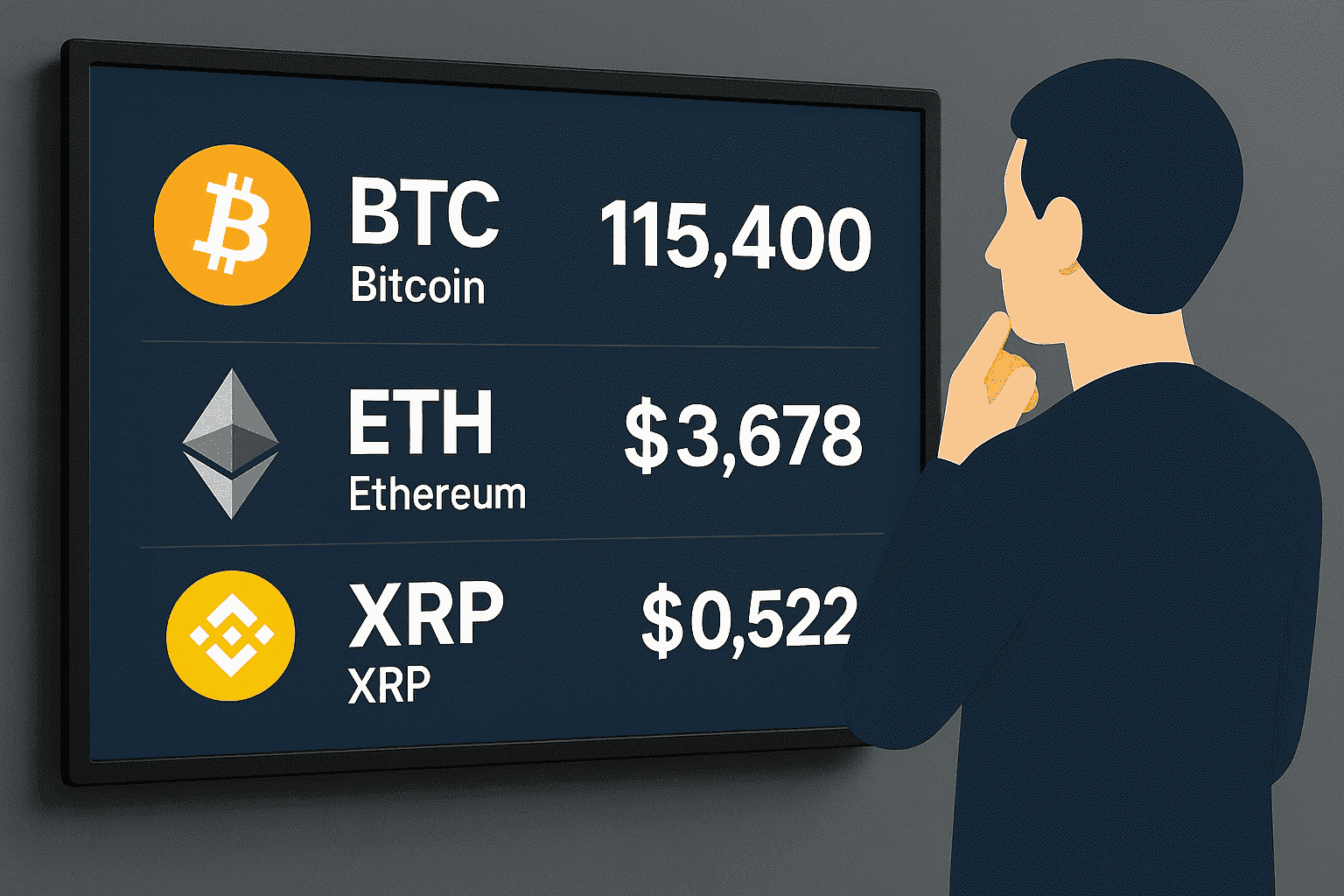Choosing the most advantageous crypto exchange rate can significantly impact your profitability, especially for large-volume trades. In this expanded guide, we cover every critical factor: from analysing market depth and rate aggregators to advanced arbitrage strategies and real-world savings examples. Follow our recommendations to optimize each transaction and minimize costs.
1. Understanding Exchange Rate Components
1.1 Core Elements
An exchange rate typically comprises:
1. Mid-market rate — the midpoint between the best bid and ask prices.
2. Spread — the difference between bid and ask on a specific platform.
3. Fees — trading fees and network (gas) fees.
4. Slippage — the price impact when executing large orders.
1.2 Volume Impact
As trade size increases, the spread and order book depth become more influential. For example, swapping $100,000 on Binance may incur minimal slippage, while a smaller exchange could move the price by 0.5–1% for the same volume.
2. Market Depth & Liquidity
2.1 Measuring Liquidity
Check cumulative order volumes within ±1% of the current rate: higher total volumes indicate deeper liquidity. For large transactions (>$10,000), use platforms with deep books like Binance, Kraken, Bitstamp, or major DEX pools.
2.2 Risks of Low Liquidity
Low liquidity leads to high slippage and unpredictable pricing. In shallow DEX pools, swapping just a few dozen ETH can cost 3–5% of the transaction value due to pool price mechanics.
3. Trading & Network Fees
In addition to spread, consider:
- Exchange trading fees (typically 0.1–0.5%).
- Gas fees on EVM networks (Ethereum, BSC), which vary with network congestion.
- Withdrawal fees charged by exchanges.
Example: selling BTC for USDT with a 0.1% trading fee plus a 0.0005 BTC withdrawal fee costs about $20–25 at BTC ≈ $50,000.
4. Rate Aggregators & Comparison Bots
4.1 Online Aggregators
Platforms like CoinGecko and CoinMarketCap provide mid-market data but do not account for your specific transaction fees or slippage. Use them as benchmarks, not final quotes.
4.2 Automated Bots
Implement a bot that polls multiple exchange APIs (Binance, Kraken, 1inch) every 5–10 seconds, calculates net rates including slippage, and alerts you or executes orders when target rates are met.
5. Centralized vs. Decentralized Exchanges
Centralized exchanges (CEX) like Binance and Kraken offer high liquidity and low spreads but require custodial wallets. Decentralized exchanges (DEX) such as Uniswap and SushiSwap enable non‑custodial trading with variable pool fees and gas costs. Your choice depends on trade volume and custody preferences.
6. Arbitrage Strategies
Price discrepancies between exchanges offer arbitrage opportunities. For spatial arbitrage, buy BTC at −0.2% spread on one exchange and sell at +0.1% on another. After fees, net profit can reach 0.15–0.3% per cycle.
7. Table 1. Platform Comparison
| Platform | Liquidity | Trading Fee | Gas Fee | Custody |
|---|---|---|---|---|
| Binance | High | 0.1% | None | Custodial |
| Kraken | High | 0.16% | None | Custodial |
| 1inch | Medium | 0.2–0.5% | Low | Non-custodial |
| Uniswap | Medium | 0.3% | High (Ethereum) | Non-custodial |
8. Table 2. Extended Checklist
| Step | Action |
|---|---|
| 1 | Determine the mid-market rate using two aggregators |
| 2 | Check order book depth on three major platforms |
| 3 | Calculate total cost (trading + network fees) |
| 4 | Estimate slippage based on your volume |
| 5 | Compare CEX vs. DEX rates |
| 6 | Identify the optimal trading window (liquidity peak) |
| 7 | Use a comparison bot or custom script |
| 8 | Execute a small test swap before the main trade |
9. FAQ
- How do I find the mid-market rate? Use CoinGecko and CoinMarketCap.
- How do I account for gas fees? Check the current gas price on Etherscan.
- What is slippage? The difference between expected and actual price during large orders.
- How can I check order book depth? Use exchange APIs to view volumes within ±1% of the price.
- Why do CEX and DEX rates differ? Due to different liquidity mechanisms and fee structures.
- How can I minimize slippage? Break up large orders into smaller ones.
- Can I lock in a rate? Yes, with limit orders on CEX.
- When is the best time to trade? During the highest volume hours, e.g. 14:00–16:00 UTC.
- What are the risks of test swaps? Only the transaction fees; main volume remains safe.
- Is account verification required? Recommended for large amounts to raise limits.
- How do I check a platform’s reputation? Read reviews, CMC ratings, and uptime history.
- Which payment methods are cheapest? P2P is cheaper than cards but carries more risk.
10. Additional Tips
Professional traders implement arbitrage strategies in Python or Node.js, use WebSocket feeds for real-time rate monitoring, and build custom scripts to calculate net profitability including all costs.
11. Real Savings Examples
- BTC/USDT Arbitrage: Achieved 0.3% profit on $50,000 cycles using bots on Binance and Kraken.
- DEX Gas Optimization: Switching to Arbitrum reduced fees by 70% at the same rate.
- Limit Order Execution: Sold ETH at 0.5% above mid-market with zero slippage.
12. Conclusion
Choosing the most advantageous crypto exchange rate involves mid-market analysis, liquidity assessment, fee and slippage calculation, and timing. Use aggregators, compare CEX and DEX, employ bots and limit orders to optimize each transaction and maximize savings.





















